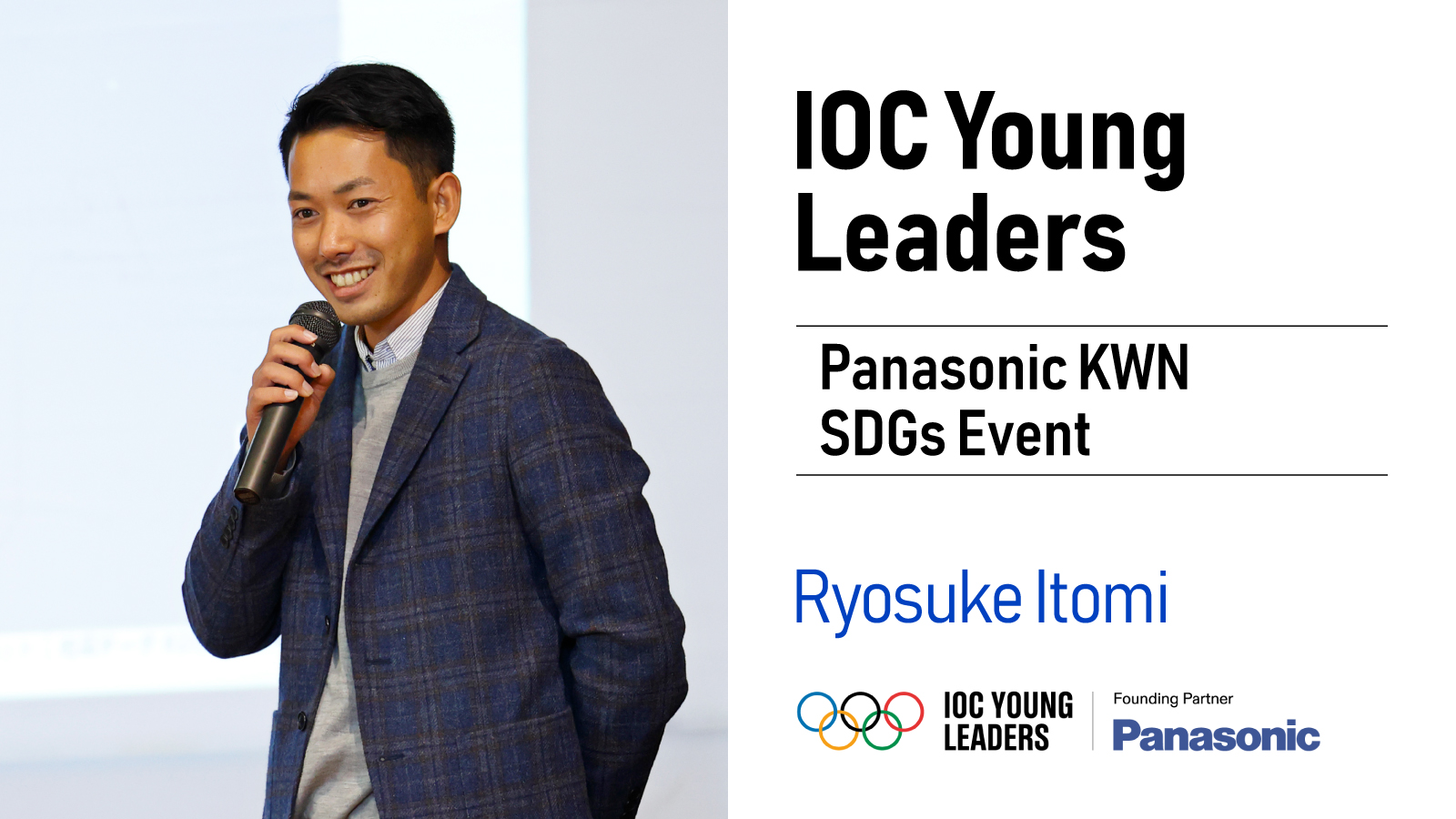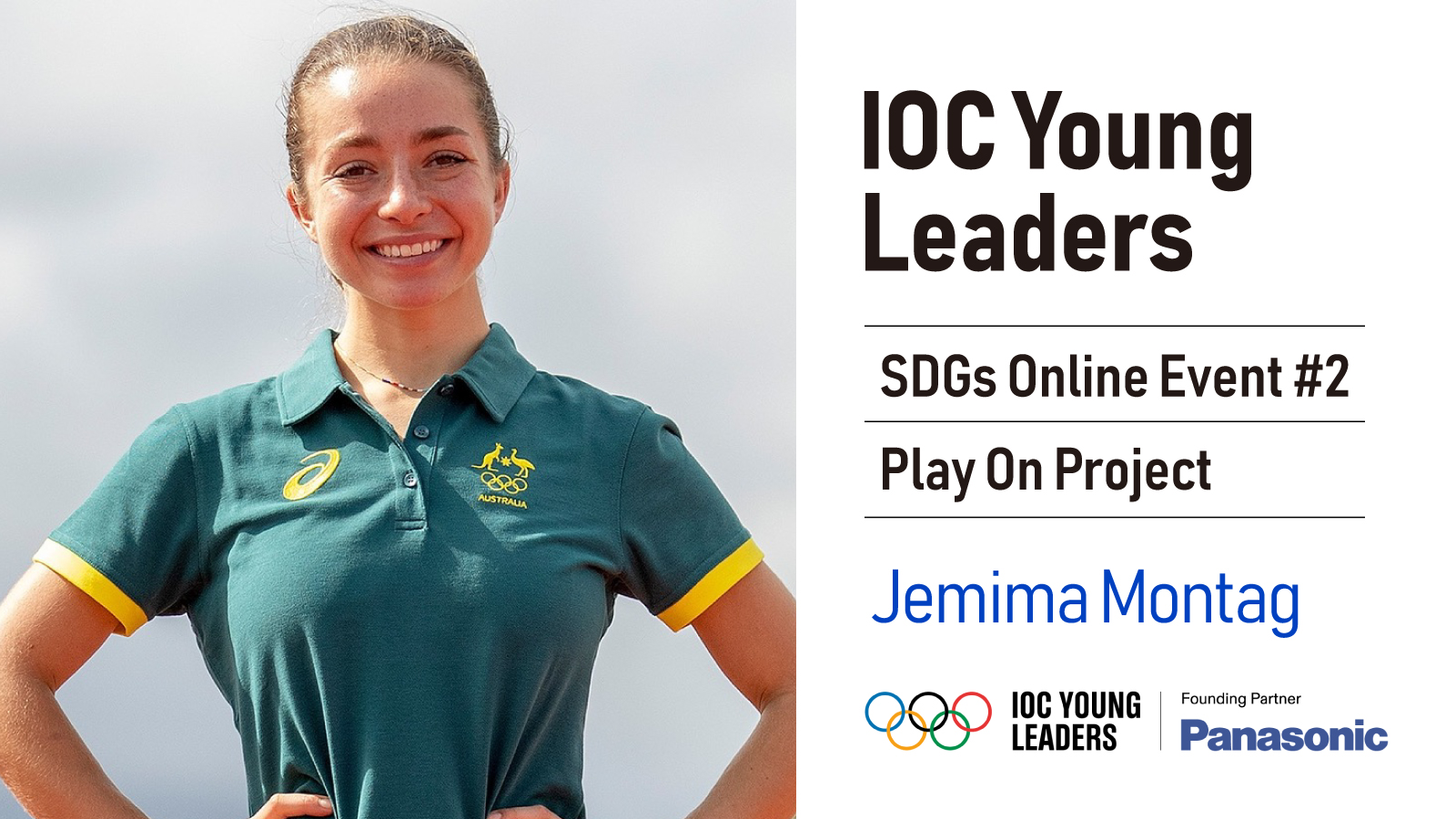
Feb 22, 2024
- Sponsorship & Events
- Feature Story
- Olympics Paralympics
- India, Middle East and Africa
- Konosuke Matsushita
- Athletes

This article is the latest in a series focusing on participants in the IOC Young Leaders Programme (IOC-YL), a program co-founded by Panasonic which aims to develop future leaders by helping talented young people around the world leverage the power of sport and make a difference in their communities.
We spoke with IOC Young Leader Jemima Montag, an Olympian race-walker from Australia who holds the country’s record for the 20km event and is currently a full time medical student. Jemima was selected to join the IOC Young Leaders Programme in early 2021; she tells us about her Play On project, which encourages girls and women to participate in competitive sport, her experiences at a recent Kid Witness News event, and her vision to achieve gender equality in sport.
What made you apply for the IOC Young Leaders Programme?
I first heard about the program via one of my mentors at university. I’ve always believed that sport has the power to change the world, and at the time I had a lot of ideas for projects that would help. I thought these would benefit from the support of a program like this, so I put in a last-minute application. I couldn’t believe it when I was selected!
What are the key takeaways for you from the IOC Young Leaders Programme so far?
I think these have been the power of connection and networking. I learned that when you work together and share your ideas with others—in our case with the mentors and experts and all the other program participants—you can challenge and support each other, which really brings your project to life and helps you to have an impact.
Tell us about the Kid Witness News event you recently took part in.
I really enjoyed interacting with the students at Sapporo Keisei high school. They were very sweet and did their best to communicate in English. I told them how popular Japanese food is in Australia and we enjoyed just bonding over our shared experiences like our home environments and our families. So even if you live in different countries and you’ve never met before, you can always find some common ground, despite the language barrier. I was very impressed by the movies the students had created; they were so creative and they seemed to be very proud of what they’ve made. I really felt they were feeling inspired by my IOC Young Leader project.
You are working towards the UN’s 5th Sustainable Development Goal—Gender Equality—through your Play On project. What specific challenges do women and young girls face when participating in sport?
Something I saw when I was younger was that when girls hit the age of about 14 or 15, they start to face a number of unique challenges which cause them to drop out of sport at double the rate of boys. In the first year of my project I conducted a lot of research to understand those challenges, and discovered they fall into three broad categories: environment, health literacy and culture.
In terms of environment, a major challenge is the quality of facilities; there are often no changing rooms or bathrooms with adequate facilities or privacy for girls—I remember feeling very self-conscious about this myself at school. Lighting around venues is often poor, so if training takes places early in the morning or late in the evening, girls and women often feel unsafe. That is a big environmental barrier.

Women and girls participate in a yoga session led by Jemima at the official launch of Play On in October 2022
As for health literacy, this is all about how well girls actually understand their body, particularly when it’s changing during adolescence. Hormone levels and temperatures can fluctuate week to week and moods can swing, and when girls don’t understand these changes, they can feel alone and frustrated and more likely to give up sport.
The final challenge I mentioned is culture—whether there are enough role models for young girls in sport. Many of the girls who took part in my research explained they’d been told they were too small or weak to tackle sport, which really impacts their confidence. So many of them don’t even put their hand up to try to participate because of that culture.
Tell us about your Play On project. How does it help address these challenges?
I’m targeting in particular the lack of representation of women and girls in sport in Australia. Sport offers us so many opportunities—a sense of connection, the ability to make friends and to improve our physical and mental well-being. I thought it’s not fair that half of the population is missing out on these. So my Play On project seeks to make those opportunities available to as many people as possible.
There are four modules: female athlete health, mental health, nutrition and inclusive spaces. I created a team of 14 experts, all women from diverse backgrounds—dietitians, psychologists, body image experts, athletes—and they each recorded 10-minute presentations.
Six of them are female Olympians who visit schools and sport clubs; they tell their own stories there about the challenges of being a female athlete and how they’ve overcome these. They cover each of the four topics and conduct open conversations where girls have the opportunity to ask questions and talk about things that they may have previously felt embarrassed about.
So really in a nutshell, Play On is my gift to my 15-year-old self. It’s the project I needed when I was a teenager.

Jemima speaks to a group of girls at her local beach about the barriers they’ve faced participating in sport
What was it like participating in the Tokyo 2020 Games?
So Tokyo was obviously impacted by the COVID pandemic, yet everything was very organized and in the end it went ahead so smoothly. Unfortunately family and friends couldn’t be there but at the end of the day, Olympians are there to do the best they can in their competition, and we still had that opportunity.
Although going into the 20km race walk event I was expected to come maybe 15th, my goal was to finish in the top 10. I was actually inspired by my grandma, who passed away just one month before the Games, and I wore her bracelet during the race. When I crossed the line, in sixth place, I pointed up to the sky and I dedicated the race to her, which was a very special moment.

Jemima racing at the Commonwealth Games Birmingham 2022 where she won 10,000m race
What does corporate sponsorship mean to athletes?
It is very important for athletes to be supported financially; the amount of training we do doesn’t leave much time to work. In my case I’m also a full time medical student which means it’s difficult to support myself. So as athletes we’re very grateful when corporate sponsors recognize these challenges.
The platform athletes have allows us to speak about things we feel strongly about, and it’s also a great opportunity for corporate sponsors; it allows them to have athletes representing their brand when they speak about issues and topics that are important to the company. So in addition to the financial benefits, sponsorship allows athletes to feel as though they’re giving something back. It gives us a greater sense of responsibility and it makes us feel we are contributing to something bigger than ourselves.
Have your impressions of Panasonic changed as a result of this program?
I remember being aware of the company and their brand previously, but not in any detail. When the IOC Young Leaders Programme kicked off, we had mentoring sessions with people from Panasonic and they provided each of us with a free Panasonic LUMIX camera. They showed us how we can use the camera to share project updates on social media, create cool videos and other content, and how to use the camera’s Bluetooth connectivity. This experience changed my perception of Panasonic in a positive way and I am very grateful for their support.
What’s your message to other young people, especially those who are active in sport?
I would say, discover what fires you up and what it is you feel passionate about! Understand that sport has the power to change the world in so many ways, and if you can connect your passion for any topic with the power of sport, you can really create something amazing!

The content in this website is accurate at the time of publication but may be subject to change without notice.
Please note therefore that these documents may not always contain the most up-to-date information.
Please note that German, French and Chinese versions are machine translations, so the quality and accuracy may vary.